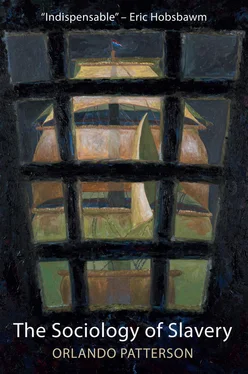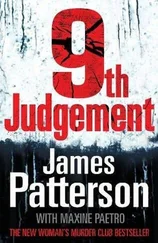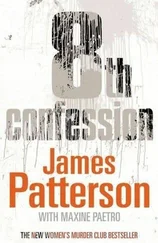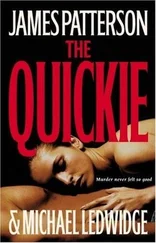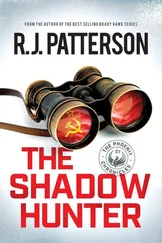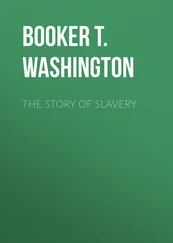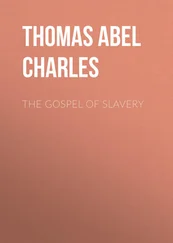1 ...6 7 8 10 11 12 ...19 However, not everything went my way with these latest data. The biggest surprise is the fact that during the 17th century 6,853 of the Jamaican enslaved came from South East Africa! No one saw anything like this during the 20th century. Indeed, it was considered a near certainty that hardly anyone came from South East Africa to the islands, or to North America (what the Portuguese slavers were up to in South America and Southern Africa was anybody’s guess at that time). That clearly was not the case. However, they were soon overwhelmed by slaves from West Africa and there is no trace of their cultures or languages in the creole culture of Jamaica, then or now.
In the next section I will return to these latest findings on the demographic history of Jamaica and their startling implication that the history of enslavement in the island was one of protracted or slow-moving genocide on a scale that approaches the Jewish holocaust in Nazi Germany.
The Sociology of Slavery was the work that launched my career as a historical sociologist. As such, beyond the personal desire, rooted in my upbringing and history, to understand what had produced me and my society, it was motivated by an important theoretical problem in sociology that had been posed by the leading sociologist of my youth, Talcott Parsons, which was: how is society possible, or more basically, how does social order come about? 117For Parsons, that problem was first explored explicitly by Hobbes, who in Leviathan 118famously posed the problem with his depiction of the state of nature as one of war of all against all, in which there was ‘continual fear, and danger of violent death’ and life was ‘solitary, poor, nasty, brutish and short’, the solution to which was submission to the absolute authority of the state or Leviathan. Parsons rejected Hobbes’ solution in favour of his normative theory of action in which individuals come to accept the demands of social life through their internalization of cultural norms. 119Even as an undergraduate forced to imbibe this functionalist dogma, I had developed deep scepticism about the Parsonian solution. It was evident to me then that this simply begged the question: yes, order is possible because of internalized culture, and I have subsequently spent a good deal of intellectual effort trying to figure out how culture persists, 120but where did this culture come from?
Parsons did have the salutary effect of leading me to Hobbes, whose Leviathan I read as avidly as Camus and Marx during my final undergraduate year. At the LSE Sociology department where I arrived in the fall of 1962, I had to justify why my thesis was not going to be merely another history of ‘facts and more damn facts’ to my doctoral supervisor, David Glass, Britain’s most eminent demographer. Hobbes, as is well known, had stated that slavery was a clear case of a state of nature, his views on the subject informed by ancient classical slavery. My answer was that Jamaican slavery came closest to an existentially real case study of a society in which life was indeed nasty, brutish and short and, with its endless series of revolts by the enslaved, racial and ethnic divisions, rapes, suicides, homicides, gibbeting, bilboeing, flight, and merciless use of the whip, a state of war of all against all. The interesting thing about Hobbes, I pointed out, was that he imagined this state of nature to have existed not simply in the condition of preliterate societies (those imagined ‘savage people in many places of America’) but in the descent of civilized people back into this savage state. He had in mind the English Civil War. North America, like Barbados was still mainly British white colonies of settlement when the Leviathan was published (1651) and Jamaica was not captured by the British until four years after this. Nonetheless, I argued that a far better case study was 18th-century Jamaica, in which civilized Britons, after a few weeks’ sojourn, erupted into near complete savagery in their ruthless relations of domination with the enslaved, in the course of which, as Dunn would later write, they ‘lived fast, spent recklessly, played desperately and died young’, 121which Hobbes would, in all likelihood, have agreed came close to his imagined state of declension to warring savagery. 122My thesis topic was accepted, although it helped that no one at LSE thought much of Talcott Parsons, in spite of his preeminence in America and Germany. What I wrote in the preface to the first edition was the gist of my thesis statement: ‘Few systems indeed have ever come closer to the brink of the Hobbesian state of nature and, as such, the sociologist researching this society is faced with the fascinating situation of examining on a concrete level the most basic question of his discipline.’ 123Nonetheless, the system did persist, for all the savagery, for 183 years, so the research problem that naturally followed from this was: how was such a system able to survive for all that time? In answering this theoretical question, I would also be addressing the even more important substantive problem that had troubled me from my childhood, and so intrigued R. D. Laing and his patients: what was it really like for my ancestors? How did they survive the long ordeal of British slavery?
I did address this issue in the penultimate chapter on resistance (see especially pp. 280–3) and considered the detailed account in the book as a whole to be all the answer that was needed, but, with hindsight, perhaps it should have been spelled out more explicitly. The simple answer to the theoretical question is that Hobbes was right. Might, a monopoly of the superior instruments of violence, always prevails, and this might the Hobbesian retro-savages who ruled the island had to their great advantage. As Elsa Goveia had earlier observed of the Leeward Islands, 124and Burnard much later of Jamaica: ‘White Jamaicans survived because they mastered the real and symbolic instruments of violence. And power in the Caribbean is closely connected with trauma.’ 125However, Hobbes’ conception of the Leviathan was not one solely of raw power. People, by virtue of being rational beings, he argued, recognized as a practical ‘law of nature’ that ‘peace is good and therefore also the way or means of peace are good’, which led them to form a covenant with each other to obey a common authority, a Leviathan, established through what he called ‘sovereignty by institutions’, that ensured peace, effective government and civilized living. Raw power that fails to ensure peace forfeits the obligation to obey and is the limit Hobbes placed on the Leviathan (some commentators think, contradictorily). My gloss on Hobbes’ theory is that Jamaican slave society, while it used the monopoly of might to ensure its genocidal and exploitative rule and prevent successful revolt, it never solidified its rule through ‘sovereignty by institutions’ and hence never won the obligation to obey from the enslaved population. 126As Jimmy, the ‘very impudent’ Ashanti enslaved by Thistlewood, told him to his face in 1771: ‘If this be living he did not care whether he lived or died.’ 127I therefore interpreted the slaveholding class as a proto-Leviathan ruling over a sociological nightmare of doulotic capitalism, brutality, resentment and instability, held together just enough by brute force to produce enormous wealth for a few, the most powerful of whom lived in absentee safety and luxury, the majority biding their time in a system where life remained nasty, brutish and short. There was no better expression of this ruling-class degeneracy than the casualness with which sex, venereal disease and death were viewed, as indicated earlier.
In the absence of any sense of voluntary obligation to obey, resentment and resistance was endemic. Jamaica, in fact, had the highest record of doulotic resistance in the Americas, and possibly in all history, and the last chapter of the work examined this extraordinary record, which I later expanded in a lengthy paper on Jamaican doulotic revolts, one of the two main sequels to The Sociology of Slavery . 128It has been said repeatedly that the great Haitian revolt of the enslaved was the first and only successful such revolt in human history. More recently, one of the island’s many doulotic rebellions, known as Tacky’s revolt, has been hailed as the greatest of the island’s many rebellions. 129Both these statements are incorrect. As I argued in the work’s final chapter, and at far greater length in my paper on doulotic revolts, the British conquest of Jamaica in 1655 was followed by a long series of interconnected revolts of the enslaved, known collectively as the First Maroon War, that lasted from 1656 until 1739. Collectively, this was, on several occasions, a far greater threat to the Jamaican slave system than Tacky’s revolt. There has been a misguided attempt by some historians to view the First Maroon War as something separate from revolts by the enslaved, especially by Michael Craton, whose work on the subject is a compendium of facts on rebellions in the West Indies with a muddled attempt to explain them, 130and even Burnard errs in this assumption, claiming that: ‘In terms of its shock to the imperial system, only the American Revolution surpassed Tacky’s War in the eighteenth century.’ 131My close examination of the record of earlier revolts shows this to be flatly not the case. The Maroon communities were constantly sourced by runaways and rebels from the plantations who were inspired to revolt by their presence, even after their treacherous siding with the whites against future rebellions, as Thistlewood’s entry in his diary of 1st August 1760, in the midst of Tacky’s revolt, makes clear: ‘Dr Miller says the rebels give out they will … fire all the plantations they can, till they force the whites to give them free like Cudjoe’s Negroes .’ [emphasis added] 132I document at some length the interaction between the enslaved and the guerrilla encampments. Making a hard and fast distinction between enslaved and Maroon rebellions during this period is as spurious as sharply distinguishing between the Viet Cong guerrilla movement and Ho Chi Minh’s national liberation front in the Vietnamese wars against the French and Americans. 133There is no doubt that these interconnected revolts posed a far greater threat to white rule than Tacky’s revolt ever did. Indeed, the rebels repeatedly forced the whites to abandon plantations in the frontier regions that the planters badly wanted to establish, since land on the southern coast had been completely taken up. 134Significantly, in all the reports of the governors writing on the deteriorating situation, and in the frantic deliberations of the Legislature on the crisis, their references were always to ‘the bad success of the parties sent out against the slaves in rebellion ’ [emphasis added]. 135In the end, the slaveholders did something quite remarkable: at the suggestion of the British government they swallowed their pride, sued for peace, and signed a treaty that granted the rebels full sovereignty over their territory as a state within a state. That was victory! It had never happened before in any known pre-existing slave society, although enslavers were to offer terms after this in other slave societies, though nothing as complete and lastingly recognized as this. 136Hence it deserves the description as the first successful revolt of the enslaved in history.Tacky’s revolt certainly frightened the whites, but that was all. It never came close to a threat to the system of slavery, and ended in disaster and carnage for the rebels, along with hundreds of innocent enslaved and, as Trevor Burnard recently noted, 137was followed immediately by a doubling down by the British slaveholders in their viciousness, as well as the spectacular rise of the 18th-century economy to heights that saw this small island with per capita incomes that far exceeded those of North America. By the 1790s, although Jamaica’s enslaved were well aware of the Haitian revolution, they indicated no signs of following suit (though this was to change during the 19th century), for the simple reason that the proto-Leviathan power of the whites was so overwhelming. As Geggus points out: ‘As always, the brutality and humiliations of bondage had to be weighed against the risks of resistance. In the absence of circumstances realistically favouring rebellion, the enslaved in Jamaica and many other places simply took pride, it seems, in what was happening in the French colony and showed their awareness by what whites everywhere called “insolence”. 138Tacky’s revolt was also inconsequential, both in terms of white dread and its consequences, when compared with Jamaica’s other great doulotic revolt, that of the Baptist War led by Daddy Samuel Sharpe in 1831, which had a decisive influence on the British Parliament’s decision to pass the act abolishing slavery, the revolt meticulously examined in Tom Zoellner’s beautifully written recent study. 139
Читать дальше
